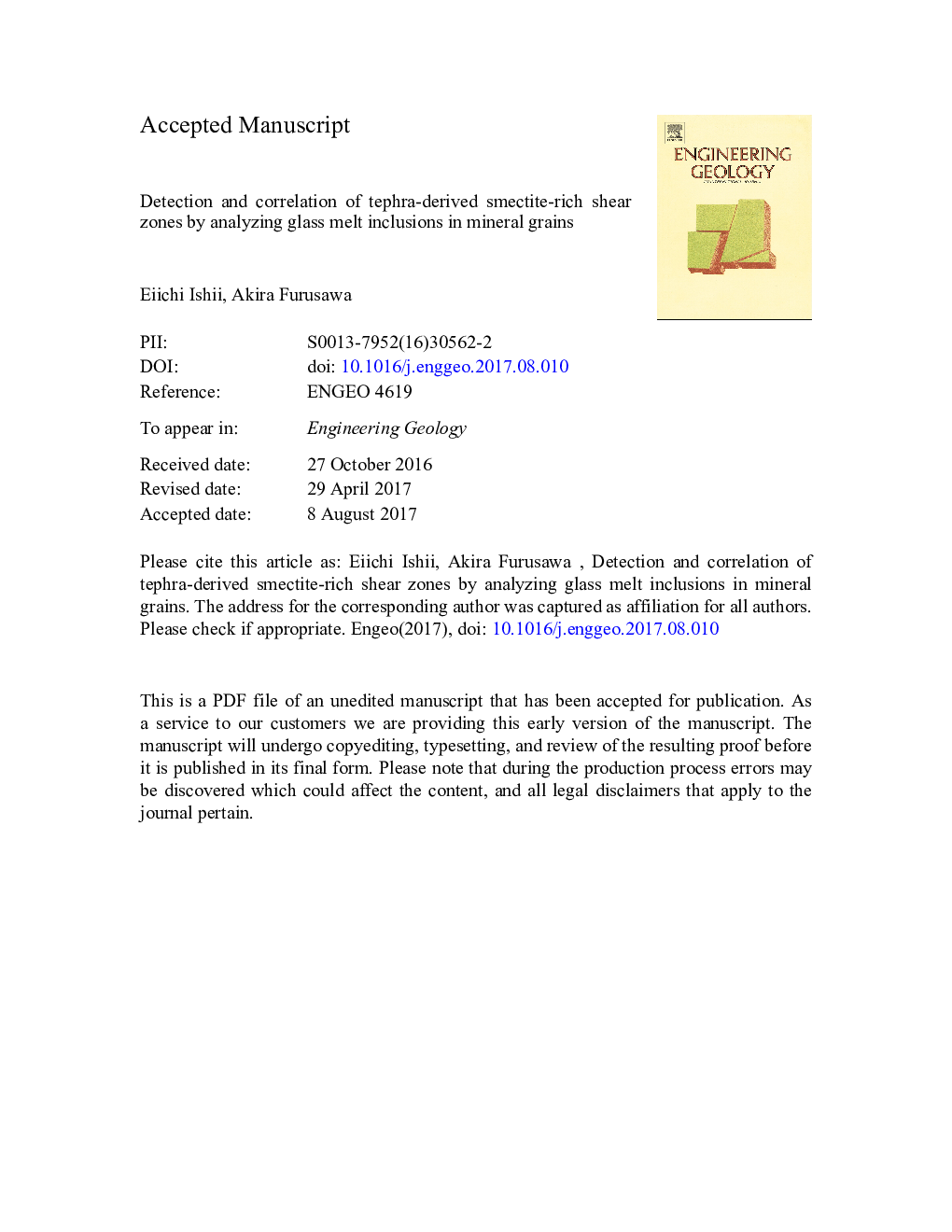| Article ID | Journal | Published Year | Pages | File Type |
|---|---|---|---|---|
| 5787516 | Engineering Geology | 2017 | 39 Pages |
Abstract
Shear zones rich in the clay mineral smectite are significant geological features because of the particular physicochemical properties of this mineral. However, predicting the distribution of such shear zones using limited borehole data is a challenge for geoscientists and geoengineers. Here we present detailed mineralogical and geochemical analyses of clay-rich shear zones (â¤Â 30 cm thick) that are associated with bedding-parallel or bedding-oblique faults in drill cores of a siliceous mudstone (containing mainly opal-cristobalite/tridymite) from the Horonobe area, northern Hokkaido, Japan. The bedding-parallel shear zones are rich in smectite and some shear zones are characterized by melt inclusions hosted by plagioclase and quartz. The chemical compositions of melt inclusions in six shear zones are very similar, but distinct from those of melt inclusions in other shear zones. These six shear zones consistently occur in horizons ~ 350 m shallower than a known tephra layer. These mineralogical characteristics and stratigraphic positions suggest that the six shear zones occur within the same tephra layer and that the smectite formed as a result of burial diagenesis of volcanic glass. Tephra-derived smectite-rich shear zones can be detected and correlated by analyzing melt inclusions preserved in mineral grains. The distribution of such shear zones can be predicted in a similar way to tephra layers.
Related Topics
Physical Sciences and Engineering
Earth and Planetary Sciences
Geotechnical Engineering and Engineering Geology
Authors
Eiichi Ishii, Akira Furusawa,
